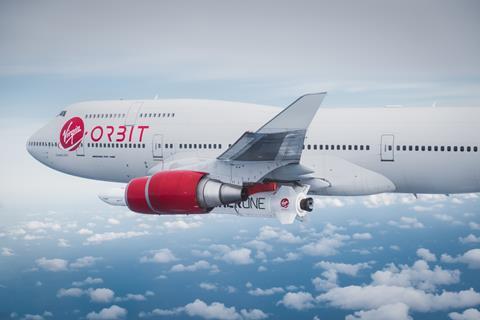The Republic of Korea Air Force has commissioned Korean Air and Seoul National University to research the use of the Boeing 747-400 to air-launch rockets.
The joint research project will explore areas such as the 747’s current capabilities, technology that needs to be applied for space launch, operating costs, and modifications necessary for the aircraft, says Korean Air.

The carrier will also look at the commercial opportunities for such a service. It notes that the recent termination of an agreement between the USA and South Korea that limited the range of South Korean ballistic missiles makes the development of an air-launch system possible.
“This research is especially meaningful as air launching capabilities will help Korea to overcome its geographical limitations,” says Korean Air.
For the time being, South Korea can only launch satellites southwards from Naro in the country’s southwest, but air launch has far more flexibility with launch direction. Moreover, rockets can be launched at altitudes of 39,000ft, greatly reducing the impact of weather.
“In addition, air launching cuts the cost of building and maintaining a site to launch vehicles,” say Korean Air. “There is also the possibility to generate revenues by providing services to other countries that do not have their own launch site.”
Virgin Orbit has already proven the ability to launch rockets from the 747-400 with its Cosmic Girl platform. In January, Cosmic Girl lofted 12 CubeSats into space using the company’s LauncherOne rocket.

The 747’s “fifth-engine” mounting point on the left wing makes the type particularly attractive for launch work. Though rarely used in airline service, the “fifth-engine” mounting is designed for the ferrying of an additional engine. Virgin Orbit uses this mounting point for LauncherOne.
Cirium fleets data shows that Korean Air has four in-service 747-400s, with an average age of 15.8 years. The aircraft are powered by Pratt & Whitney PW4000 engines.
Beijing is also developing the capability to launch ballistic missiles from an aircraft, specifically the Xian H-6N bomber. In October 2020, a video appeared on Chinese social media that showed an H-6N carrying what could be a ballistic missile or boost-glide vehicle along its centreline.





























